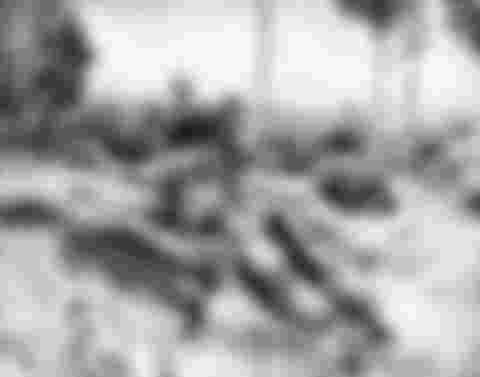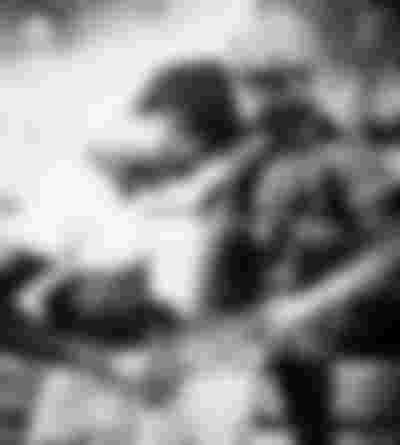Liberation War
War of Liberation The War of Liberation started on 26 March 1971 and ended with the independence of Bangladesh on 16 December that year. This armed liberation struggle was the ultimate manifestation of the deteriorating relations between East and West Pakistan on a number of serious issues, including multiple incidents, adverse conditions, unequal financial distribution system and deprivation of administrative authority.

Issues that have soured relations between the two parts of Pakistan since the end of British rule in 1947 include land reform, state language, economic and administrative differences between the two provinces, provincial autonomy, East Pakistan's defense system and other related issues.

In the 1970 general elections, the Awami League won 16 of the 189 seats in East Pakistan in the National Assembly, and Awami League leader Bangabandhu Sheikh Mujibur Rahman emerged as the sole representative of the people of East Pakistan. He became the leader of the majority party in the National Assembly of Pakistan. But Pakistan's military and civilian leadership conspired against the handover of power to the majority Awami League and its leader Sheikh Mujib. Sheikh Mujib's historic speech on March 7, 1971, made his attitude to the Pakistani military junta clear. Then the non-cooperation movement started. Talks between Sheikh Mujib and Yahya Khan have already started to resolve the issue. Negotiations failed and at midnight on March 25, 1971, Pakistani troops started massacring Bengalis. The Bengali soldiers of the Pakistan Army and the Bengali members of the paramilitary forces immediately expressed solidarity with the people's liberation movement.
At midnight on 25 March, the Pakistan Army was ordered to launch an operation against the Bengalis. According to the plan called 'Operation Search Light', two headquarters were set up. The first headquarters was formed under the supervision of Major General Rao Farman Ali. Here Brigadier Arbab of the 57th Brigade was given charge of operations only in and around Dhaka city and Major General Khadim Raja was given charge of operations in the rest of the province. Lieutenant General Tikka Khan is in overall charge of the operation.
Students and nationalist political activists formed resistance outside the cantonment. Roadblocks were set up in different parts of the city to prevent Pakistani troops from conducting operations. On the night of March 25, Pakistani troops took to the streets of Dhaka in wireless jeeps and trucks. Their first armored fleet left the Dhaka Cantonment and faced a barricade in the Farmgate area within a kilometer. Giant tree trunks were strewn across the road. Useless old cars and immovable steam rollers are also used in barricades. Hundreds of people chanted 'Joy Bangla' for about 15 minutes. However, the army's bullets quickly silenced them, and the army began to spread throughout the city, committing genocide.

Pakistani soldiers kill anyone they see on the sidewalks, threatening to destroy everything in front of them. Without any discrimination, the people of the city and all the public and private houses were destroyed and the tanks of the soldiers roamed around. Many residential areas were destroyed by artillery and gunfire, and houses were set on fire. The soldiers entered the residential halls of Dhaka University and brutally killed many students. They also killed some teachers of Dhaka University that night. They attacked Hindu-dominated areas of old Dhaka, killing countless people, burning and looting houses, and raping women.
These attacks on unarmed people and indiscriminate genocide campaigns are covered in the world's media. On the night of March 25, Pakistani soldiers arrested Bangabandhu Sheikh Mujibur Rahman.
With the declaration of independence of Bangladesh on 26 March 1971, spontaneous coups for independence took place in all parts of the country. People of all classes irrespective of government officials-employees, political activists, students, workers, farmers, professionals took part in this coup. The resistance built by the Pak army to deal with the attack and genocide was short-lived at an early stage. The enemy troops were many in number and they were armed with many weapons, so the freedom fighters crossed the border to India for safe haven. Soon the isolated freedom fighters in different parts of the country were brought under a single command.
On 4 April, senior officers of the Mukti Bahini gathered at the headquarters of the Second East Bengal at Teliapara, a semi-mountainous area surrounded by tea gardens. Colonel MAG Osmani, Lieutenant Colonel Abdur Rob, Lieutenant Colonel Salah Uddin Mohammad Reza, Major Kazi Nuruzzaman, Major Khaled Mosharraf, Major Nurul Islam, Major Shafat Jamil, Major Moinul Hossain Chowdhury and other army officials were present there. At this meeting, four senior commanders were given the responsibility of the operation. Major Safiullah was given the charge of the Sylhet-Brahmanbaria region. Major Khaled Musharraf became the captain of Comilla-Noakhali region. Major Ziaur Rahman became the captain of Chittagong and Chittagong Hill Tracts and Major Abu Osman Chowdhury became the captain of Kushtia-Jessore region. It was at this meeting that the organizational concept of the forces participating in the war of liberation and the outline of the command structure were formulated. Colonel MAG Osmani was given the all-round leadership of the Mukti Bahini.
On 10 April Bangabandhu Sheikh Mujibur Rahman was made the President, Syed Nazrul Islam the Vice President and Tajuddin Ahmed the Prime Minister. The expatriate government of the People's Republic of Bangladesh i.e. Mujibnagar Government was formed. The next day, Tajuddin Ahmed announced the names of three more regional captains. Captain Nawazish became the captain of Rangpur region, Major Nazmul Haque of Dinajpur-Rajshahi-Pabna region and Major MA Jalil of Barisal-Patuakhali region. Each region is identified as a sector. At a conference of sector commanders held from 10 to 16 July, the whole of Bangladesh was divided into eleven sectors and various sub-sectors to facilitate operations.
On 26 March, the Prime Minister of India, Indira Gandhi, expressed her government's full support for the liberation struggle of the Bengalis. The Indian Border Security Force (BSF) opened the Bangladesh-India border to provide safe haven to oppressed and intimidated Bengalis.
The governments of West Bengal, Bihar, Assam, Meghalaya and Tripura set up refugee camps along the border. Freedom fighters were immediately selected from these camps. With an unquenchable desire to liberate Bangladesh from the clutches of the Pakistani army, students, peasants, workers and political activists joined the Mukti Bahini and received training in war tactics, weapons and explosives. At the end of the training they are engaged in fighting against the enemy in different sectors. The headquarters of the Bangladesh Army was established at 6 Theater Road, Kolkata. The headquarters started functioning from 12 April. Lieutenant Colonel MA Robb and Group Captain AK Khandaker were appointed Chief of Staff and Deputy Chief of Staff respectively.
In the war against the Pakistani army, besides the Mukti Bahini, many more forces were organized inside Bangladesh. Among these forces are Quader Bahini of Tangail, Latif Mirza Bahini of Sirajganj, Akbar Hossain Bahini of Jhenaidah, Hemayet Bahini of Faridpur, Quddus Mollah Bahini and Gafur Bahini of Barisal and Afsar Bahini and Aftab Bahini of Mymensingh. All these forces were organized locally and engaged in several battles against the occupying forces in their own strength. Proletarian Party leader Siraj Sikder organized his forces in Barisal. Another force, the Mujib Bahini, was formed with the active cooperation of Major General Oban, a guerrilla warfare expert in the Indian Army. Members of the Mujib Bahini were trained in Dehradun. Chhatra League leaders Sheikh Fazlul Haque Moni, Tofail Ahmed, Abdur Razzak and Sirajul Alam Khan were the organizers of this force.
The members of the Mukti Bahini were divided into regular and irregular. Irregular forces were known as mass forces. Regular forces included troops from the East Bengal Regiment and the East Pakistan Rifles. Students, peasants, workers and political activists were recruited into the people's army in different sectors after initial training. Members of the people's army were sent to conduct guerrilla war against the enemy inside Bangladesh. Members of the regular forces were engaged in the traditional battles of the armed forces. The first brigade of regular forces, known as the Z Force, was formed in July. The brigade was named after the English initials 'Z' in the name of Major Ziaur Rahman, the commander of the brigade. The brigade consists of 1st, 3rd and 8th East Bengal Regiments. The second regular brigade, known as the S Force, was formed in October with soldiers from the 2nd and 11th East Bengal Regiments. Safiullah was the commander of this brigade. Under the captaincy of Khaled Musharraf, 'K Force' was formed with the members of 4th, 9th and 10th East Bengal.

The Bangladesh Air Force was formed on 26 September in Dimapur, Nagaland. It was organized by Air Commodore AK Khandaker. The Bangladesh Air Force started its journey with Squadron Leader Sultan Mahmud, Flight Lieutenant Badrul Alam, Captain Khaleq, Sattar, Shahabuddin, Mukit, Akram, Sharfuddin and 7 Airmen. They consisted of only a handful of Dakota, Otter type aircraft and elevated helicopters. Similarly, the Bangladesh Navy is made up of navy personnel who have left the Pakistan Navy. The first navy 'Bangabandhu Navy' was inaugurated on 9 November 1971.
It included only 6 small boats. The Bangladesh Armed Forces was well organized with regular brigades, sector troops and guerrilla forces, Bangladesh Air Force and Bangladesh Navy.
The Mukti Bahini initially fought successfully against the enemy in many defensive battles. But in a short time they have to make a temporary retreat. The Mukti Bahini, however, later reorganized and went to war with better weapons after April-May 1971.

During the war of liberation of Bangladesh, at the international level, the United States and the People's Republic of China gave strategic support to Pakistan by referring to this war as an internal matter of Pakistan. On the other hand, the people of India, the Soviet Union and their allies, and the people of Japan and many countries in the West sided with Bangladesh. On 9 August 1971, the Government of India signed an alliance agreement with the Soviet Union to gain strategic advantage against the Sino-US-Pakistan axis. The signing of this agreement added a new dimension to the war of independence of Bangladesh.
Meanwhile, at the headquarters of the Mukti Bahini, the strategy of fighting against the Pakistani soldiers was thoroughly analyzed. Thinking that the conventional tactics would not be conducive to defeating the Pakistani troops, the decision was taken to launch an all-out guerrilla war across the country. At the same time, sector commanders were instructed to recruit freedom fighters from within the country and recruit them as guerrilla fighters with necessary training.
In November 1971, a joint command of the Mukti Bahini and the Indian forces was formed. Lieutenant General Jagjit Singh Aurora, Commander of the Indian Army's Eastern Command, was appointed Chief of the Joint Forces. However, after the bombardment of Amritsar, Srinagar and Kashmir Valley by the Pakistan Air Force on the evening of 3 December, the joint command of the Liberation Army and the Indian Army took an effective role. That's when the Indian armed forces were instructed to retaliate against the Pakistani army. The Mukti Bahini and the Indian Army gradually advanced inside Bangladesh. As a result, the defeat and surrender of the Pakistani troops became inevitable. A ceasefire was proposed in the UN Security Council on the eve of Bangladesh's complete liberation from the enemy. The effort was thwarted by the Soviet Union's veto.
The Indian troops and the freedom fighters of Sector 11 reached Tongi in Dhaka on 14 December. On the morning of 16 December they took up position at Savar. Major General Jamshed, Commander of the 38th Division of the Pakistan Army, received Major General Nagra, Commander of the Indian Army, near the Mirpur Bridge near Dhaka city. Mukti Bahini and Indian troops entered Dhaka at 10 am.






